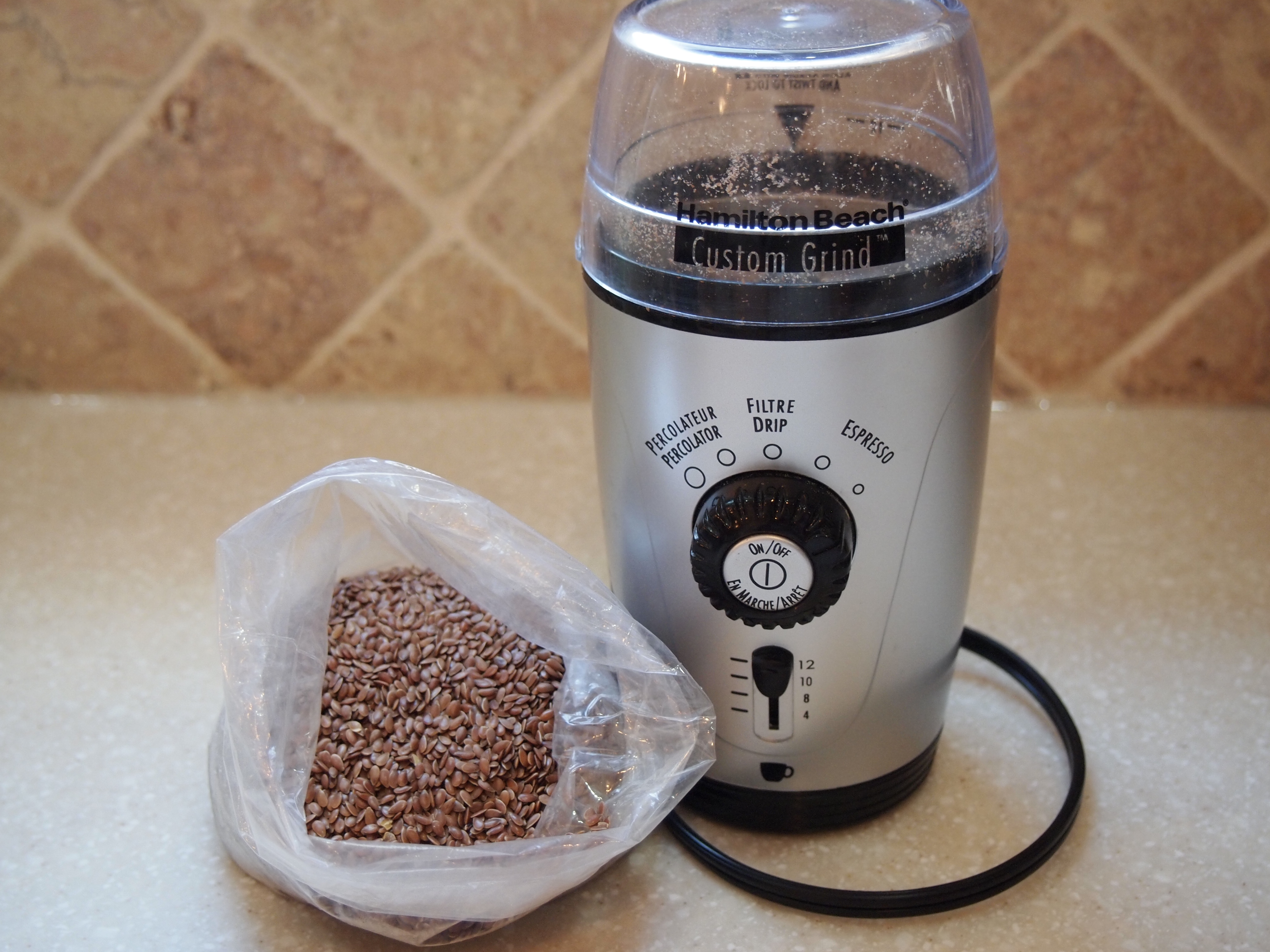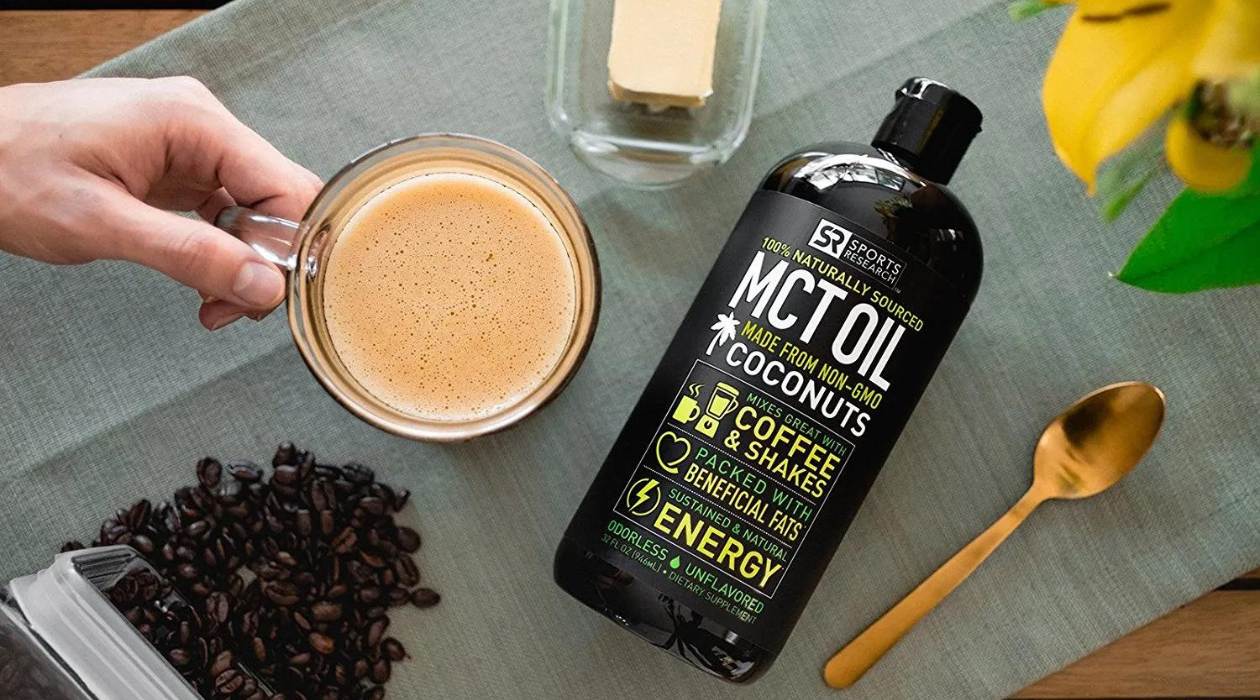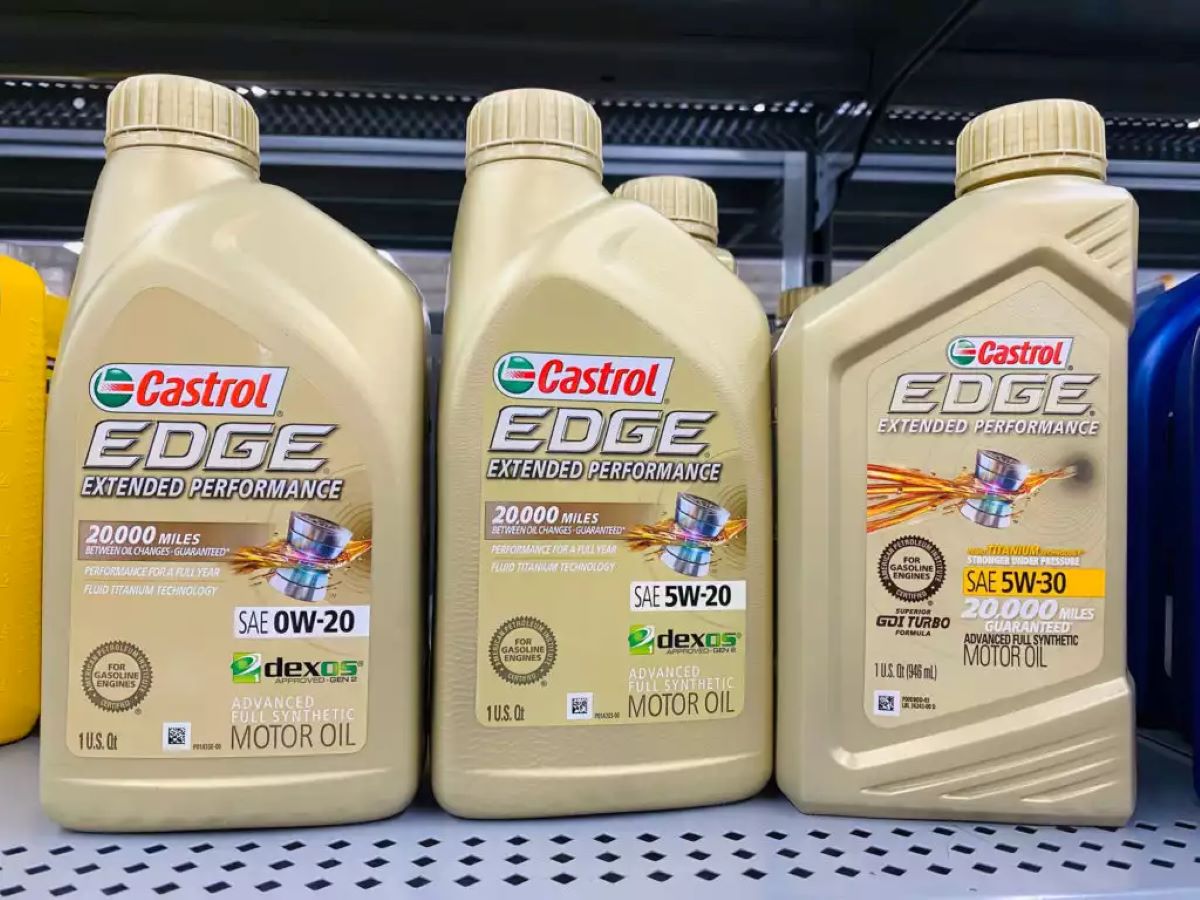

Articles
How To Store Flaxseed Oil
Modified: August 17, 2024
Learn the best practices for storing flaxseed oil with our informative articles. Keep your flaxseed oil fresh and maintain its nutritional benefits.
(Many of the links in this article redirect to a specific reviewed product. Your purchase of these products through affiliate links helps to generate commission for Storables.com, at no extra cost. Learn more)
Introduction
Flaxseed oil, also known as linseed oil, is a highly nutritious and versatile oil that has gained popularity in recent years due to its many health benefits. Derived from the seeds of the flax plant (Linum usitatissimum), flaxseed oil is rich in omega-3 fatty acids, lignans, and other essential nutrients.
Research has shown that incorporating flaxseed oil into your diet can help promote heart health, improve digestion, boost the immune system, and reduce inflammation. This makes it an excellent choice for those looking to enhance their overall well-being.
However, it is important to note that flaxseed oil is very sensitive to light, heat, and oxygen, which can cause it to become rancid and lose its nutritional value. Therefore, proper storage is crucial to maintain the freshness and quality of flaxseed oil.
In this article, we will explore the best practices for storing flaxseed oil to ensure its longevity and preserve its health benefits. By following these guidelines, you can maximize the shelf life of your flaxseed oil and enjoy its nutritional advantages for a longer period of time.
Key Takeaways:
- Proper storage of flaxseed oil is essential to maintain its freshness and nutritional value. Choosing the right container, keeping it cool and dark, and using it before the expiry date are key practices to preserve its quality.
- Refrigerating or freezing flaxseed oil can extend its shelf life, but proper thawing is crucial. Regularly checking for rancidity and using the oil before the expiry date ensures maximum freshness and nutritional benefits.
Read more: How To Store Flaxseed Meal
Benefits of Flaxseed Oil
Flaxseed oil is packed with essential nutrients that can offer a wide range of health benefits. Here are some of the key advantages of incorporating flaxseed oil into your diet:
- Rich in Omega-3 Fatty Acids: Flaxseed oil is a great plant-based source of omega-3 fatty acids, specifically alpha-linolenic acid (ALA). Omega-3 fatty acids are known for their anti-inflammatory properties and can help support heart health, improve brain function, and reduce the risk of chronic diseases such as heart disease and diabetes.
- Supports Heart Health: The omega-3 fatty acids in flaxseed oil can help reduce inflammation in the body, lower blood pressure and triglyceride levels, and improve overall cardiovascular health. Studies have shown that regular consumption of flaxseed oil can help lower the risk of heart disease and stroke.
- Improves Digestion: Flaxseed oil is a natural laxative and can help promote regular bowel movements. It also aids in the absorption of nutrients in the intestines, thus supporting optimal digestion.
- Boosts the Immune System: The lignans present in flaxseed oil have immune-boosting properties and can help strengthen the body’s defense against infections and diseases. They also possess antioxidant properties, which protect the body’s cells from oxidative stress and damage caused by free radicals.
- Reduces Inflammation: Flaxseed oil contains compounds, such as lignans and omega-3 fatty acids, that have anti-inflammatory properties. Regular consumption of flaxseed oil may help alleviate symptoms of inflammatory conditions like rheumatoid arthritis and inflammatory bowel disease.
These are just a few of the many benefits that flaxseed oil can offer. Incorporating it into your diet can provide a natural and convenient way to support your overall health and well-being.
Proper Storage of Flaxseed Oil
To maintain the freshness, flavor, and nutritional value of flaxseed oil, it is crucial to store it properly. Here are some guidelines to follow for optimal storage:
- Choose the Right Container: When purchasing flaxseed oil, opt for bottles that are dark in color, such as amber or cobalt blue. These bottles are designed to block out light and protect the oil from oxidation.
- Keep It Cool and Dark: Flaxseed oil is sensitive to both heat and light, which can cause it to degrade and become rancid. Store the oil in a cool, dark place, away from direct sunlight and heat sources like stovetops or ovens.
- Avoid Exposure to Air and Light: Flaxseed oil should be tightly sealed to prevent exposure to air, which can lead to oxidation. Oxygen can break down the fatty acids in the oil, causing it to spoil faster. Avoid using containers with wide openings or clear glass bottles that allow air and light to reach the oil.
- Refrigerate or Freeze: To further extend the shelf life of flaxseed oil, you can store it in the refrigerator or freezer. Cold temperatures slow down the oxidation process and help maintain the freshness of the oil. If you choose to refrigerate or freeze your flaxseed oil, make sure to transfer it to a suitable container that is resistant to temperature changes.
- Check for Rancidity: Before each use, give the flaxseed oil a sniff to ensure it hasn’t become rancid. Rancid oil will have an unpleasant odor and taste. If you detect any signs of rancidity, discard the oil and replace it with a fresh bottle.
- Use Before the Expiry Date: Flaxseed oil typically has a shelf life of about 6-9 months if stored properly. Be mindful of the expiry date on the bottle and try to use the oil before it reaches that date. Fresh flaxseed oil will have a mild, nutty flavor and provide the maximum nutritional benefits.
By following these storage guidelines, you can ensure that your flaxseed oil remains fresh, flavorful, and retains its nutritional value for a longer period of time. Proper storage practices will help you get the most out of your flaxseed oil and enjoy all its health benefits.
Choosing the Right Container for Storage
When it comes to storing flaxseed oil, the choice of container is critical for preserving its freshness and quality. Here are some considerations for selecting the right container:
- Dark-Colored Bottles: Flaxseed oil is sensitive to light and can easily become rancid when exposed to sunlight or bright indoor lighting. Opt for bottles that are dark in color, such as amber or cobalt blue. These bottles are designed to block out light and protect the oil from oxidation.
- Glass or Plastic: While glass bottles are a popular choice for storing flaxseed oil, high-quality, food-grade plastic containers can also be effective. Ensure that the container is made of materials that are safe for storing edible oils and have tight-fitting lids to prevent air and light exposure.
- Airtight Seal: The container should have an airtight seal to minimize the contact between the oil and air. Oxygen can cause the oil to oxidize and spoil faster. Look for bottles with screw-top caps or lids that provide a tight seal. Avoid containers with wide openings or flip-top caps that allow air to enter.
- Size of the Container: Consider the size of the container when choosing it for storage. It is recommended to purchase flaxseed oil in smaller quantities to ensure freshness. Flaxseed oil has a relatively short shelf life once opened, so smaller containers allow you to use it up more quickly, reducing the chances of spoilage.
- Temperature-Resistant: Flaxseed oil should be stored in a container that is resistant to temperature changes if you choose to refrigerate or freeze it. Sudden shifts in temperature can cause glass containers to break or plastic containers to warp. Look for containers specifically labeled as suitable for refrigeration or freezing.
- Transparent vs. Opaque: While dark-colored bottles are the preferred choice, transparent containers can also be used if they are stored in a cool, dark place, away from direct light. However, keep in mind that transparent containers increase the risk of light exposure and should be handled with extra care.
By selecting the right container for storing flaxseed oil, you can ensure that it remains fresh and retains its nutritional qualities for a longer period. Remember to always check the integrity of the container, especially the seal, before purchasing and using it for storing your flaxseed oil.
Keeping Flaxseed Oil in a Cool and Dark Place
Proper storage of flaxseed oil is crucial to maintain its freshness and nutritional value. One of the key factors in ensuring the longevity of flaxseed oil is keeping it in a cool and dark place. Here’s why:
Sensitivity to Heat: Flaxseed oil is highly sensitive to heat. Exposure to high temperatures can accelerate the oxidation process, leading to the breakdown of the oil’s beneficial compounds and the development of off-flavors and odors. It is essential to store flaxseed oil away from sources of heat, such as stovetops, ovens, or direct sunlight.
Preventing Oxidation: When flaxseed oil comes into contact with air, it undergoes oxidation, which causes it to go rancid. Keeping the oil in a cool place helps slow down the oxidation process, preserving its quality and preventing it from spoiling quickly.
Darkness for Protection: Light, especially sunlight, can speed up the rate of oxidation in flaxseed oil. Exposure to light breaks down the oil’s essential fatty acids and nutrients, diminishing its health benefits. Storing flaxseed oil in a dark place, such as a pantry or a cupboard, shields it from light and helps maintain its integrity.
Avoid storing flaxseed oil near windows or in locations where it may be exposed to direct sunlight or intense indoor lighting. Choose a cool and dark spot in your kitchen or pantry that is away from any sources of heat and light.
Additionally, keep in mind that flaxseed oil should be stored at room temperature. Exposing it to excessively low temperatures, such as in the refrigerator, can cause the oil to solidify and affect its texture. However, if you live in a particularly warm climate or have difficulty maintaining a cool environment, storing flaxseed oil in the refrigerator can help prolong its shelf life.
Remember to always securely seal the container after each use to prevent the entry of air and light. Leaving the flaxseed oil exposed to the environment, even for a short period, can lead to oxidation and spoilage.
By storing flaxseed oil in a cool and dark place, you can ensure its freshness and preserve its nutritional value for a more extended period. Proper storage conditions will help you enjoy the numerous health benefits of flaxseed oil with every use.
Store flaxseed oil in a dark, airtight container in the refrigerator to prevent oxidation and maintain its freshness. Avoid exposing it to heat or light to preserve its nutritional benefits.
Read more: How To Store Flaxseed Gel
Avoiding Exposure to Air and Light
When it comes to properly storing flaxseed oil, avoiding exposure to air and light is essential. This is because both air and light can have detrimental effects on the oil’s quality and shelf life. Here’s why:
Oxidation and Rancidity: When flaxseed oil comes into contact with air, it undergoes oxidation. This process leads to the breakdown of the oil’s fatty acids, causing it to become rancid. Rancid flaxseed oil not only loses its nutritional value but also develops an unpleasant odor and taste. To prevent oxidation, it is crucial to minimize the oil’s exposure to air.
Light-Induced Degradation: Flaxseed oil is especially sensitive to light, particularly UV radiation. Exposure to light can break down the oil’s delicate fatty acids and antioxidants, leading to the loss of nutritional benefits. Additionally, light exposure can result in the formation of free radicals, which can further contribute to the oil’s degradation. Shielding flaxseed oil from light is crucial to maintain its quality.
To avoid exposure to air and light, here are some important steps to follow:
- Choose Dark-Colored Bottles: When purchasing flaxseed oil, opt for bottles that are dark in color, preferably amber or cobalt blue. These colored bottles help to block out light and protect the oil from harmful UV rays.
- Seal the Container Tightly: After each use, make sure to securely seal the flaxseed oil container to minimize the contact of the oil with air. Use a bottle with a screw-top cap or a lid that provides an airtight seal. This will help slow down the oxidation process and preserve the freshness of the oil.
- Store in a Dark Place: Find a cool and dark spot in your kitchen or pantry to store the flaxseed oil. Keep it away from direct sunlight, windows, and strong indoor lighting. The dark environment will shield the oil from light and help maintain its nutritional integrity.
- Minimize Air Exposure: When using flaxseed oil, try to pour out the desired quantity while keeping the container closed as much as possible. This will reduce the amount of air that comes into contact with the remaining oil inside the container. Additionally, avoid leaving the bottle open for extended periods.
By taking these precautions, you can prevent the oxidation and degradation of your flaxseed oil, ensuring that it remains fresh, flavorful, and nutrient-rich.
It’s important to note that even with proper storage, flaxseed oil will eventually expire. Be sure to check the expiration date and use the oil before it becomes rancid or loses its nutritional potency.
Refrigerating or Freezing Flaxseed Oil
Refrigerating or freezing flaxseed oil can be an effective method to extend its shelf life and maintain its freshness. Cold temperatures slow down the oxidation process, which helps preserve the oil’s nutritional properties and prevent spoilage. Here’s what you need to know about refrigerating or freezing flaxseed oil:
Refrigerating Flaxseed Oil: Refrigeration is a popular method for storing flaxseed oil, especially if you live in a warm climate or your kitchen tends to get hot. Here’s how to refrigerate flaxseed oil:
- Transfer to a Suitable Container: If your flaxseed oil comes in a glass bottle, it may be advisable to transfer it to a plastic or food-grade polyethylene container before refrigerating. Glass may crack or shatter if exposed to drastic temperature changes.
- Seal Tightly and Label: Ensure that the container is tightly sealed to prevent any air or moisture from getting into the oil. Label the container with the date of storage to keep track of its freshness.
- Place in the Refrigerator: Choose a spot in the refrigerator that maintains a consistent temperature, preferably the main compartment rather than the door. Avoid storing it near foods with strong odors, as flaxseed oil can easily absorb those smells.
- Protect from Light: Although refrigeration protects flaxseed oil from excessive heat, it is still important to shield it from light. Store the container in a dark part of the refrigerator, away from any direct exposure to light.
- Check for Solidification: Flaxseed oil may solidify or become cloudy when refrigerated, which is normal. Before use, allow the oil to reach room temperature or run the container under warm water to return it to its liquid state.
Freezing Flaxseed Oil: Freezing flaxseed oil can further prolong its shelf life. However, freezing can slightly alter the texture of the oil. Here’s how to freeze flaxseed oil:
- Transfer to a Freezer-Safe Container: Similar to refrigeration, consider transferring the oil to a plastic or food-grade polyethylene container before freezing, as glass bottles can crack due to the expansion of liquid when frozen.
- Seal Tightly and Label: Make sure the container is tightly sealed to prevent freezer burn and label it with the date of storage.
- Place in the Freezer: Choose a stable spot in the freezer that maintains a consistent temperature and is not exposed to frequent temperature fluctuations. Keep it away from foods with strong odors.
- Shield from Light: Just like refrigeration, it’s crucial to protect the flaxseed oil from exposure to light during freezing. Store the container in a dark part of the freezer, such as a drawer or the back of a shelf.
- Thawing: When you need to use the frozen flaxseed oil, remove it from the freezer and allow it to thaw in the refrigerator. This gradual thawing preserves the quality of the oil and minimizes any changes in texture.
Remember to always use your senses (smell and taste) to check for any signs of rancidity before using refrigerated or frozen flaxseed oil. If it develops an off-putting odor or taste, discard it and replace it with a fresh supply.
By refrigerating or freezing flaxseed oil, you can prolong its shelf life and ensure that it remains fresh and nutritious for an extended period. Choose the method that best suits your needs and storage conditions to enjoy the maximum benefits of flaxseed oil.
Checking for Rancidity
Checking for rancidity is an important step to ensure the quality and safety of flaxseed oil before use. Over time, exposure to air, light, and heat can cause the oil to become rancid, leading to a deterioration in taste, smell, and nutritional value. Here’s how to check for rancidity in flaxseed oil:
- Smell Test: Take a whiff of the flaxseed oil. Rancid oil will have a strong, unpleasant odor, often described as “fishy” or “stale.” Fresh flaxseed oil should have a mild, slightly nutty aroma. If it smells off or rancid, it’s best to discard it.
- Taste Test: If you’re comfortable with tasting a small amount of flaxseed oil, you can also evaluate its flavor. Rancid oil will have an unpleasant, bitter taste. Fresh flaxseed oil should have a pleasant, nutty flavor. If it tastes rancid or off, do not consume it.
- Observe for Cloudiness or Sediment: Inspect the flaxseed oil for any visible changes in appearance. Rancid oil may appear cloudy or have visible sediment at the bottom of the container. Fresh flaxseed oil should be clear and free of any particles or haze.
- Check Expiry Date: Always check the expiry date on the bottle of flaxseed oil. While proper storage can extend its shelf life, it is still important to use the oil within the recommended timeframe. If the oil is past its expiry date, it is advisable to discard it, even if it appears and smells fine.
It is essential to note that rancid flaxseed oil not only loses its nutritional benefits but can also be harmful to consume. Consuming rancid oil may cause digestive upset and oxidative stress in the body.
To ensure the freshness and quality of flaxseed oil, it is recommended to purchase it in smaller quantities, store it properly, and use it within its recommended expiration period. Keep the oil tightly sealed, protected from air and light, and stored in a cool, dark place to minimize the risk of rancidity.
If you have any doubts about the freshness or safety of the flaxseed oil, it is best to err on the side of caution and dispose of it. Always replace rancid oil with fresh, good-quality flaxseed oil to enjoy the full nutritional benefits it has to offer.
Using Flaxseed Oil Before the Expiry Date
Flaxseed oil, like any other food product, has a limited shelf life. To enjoy its maximum freshness and nutritional benefits, it is important to use flaxseed oil before its expiry date. Here’s why:
Preservation of Quality: The expiry date on the bottle indicates the manufacturer’s estimate of how long the flaxseed oil will maintain its quality, taste, and nutritional value. Using the oil before this date ensures that you experience its fullest flavor and potency.
Prevention of Rancidity: Over time, exposure to air, light, and heat can cause flaxseed oil to go rancid. Rancid flaxseed oil not only loses its nutritional benefits but also develops an unpleasant taste and odor. By using the oil before the expiry date, you minimize the risk of consuming rancid oil and protect your health.
Optimal Nutrient Content: Flaxseed oil is rich in omega-3 fatty acids, lignans, and other beneficial compounds. These nutrients can degrade over time, especially if the oil is not stored properly or is past its expiration date. By using flaxseed oil before it expires, you ensure that you are getting the maximum nutritional value from the oil.
To make the most of your flaxseed oil before the expiry date, consider the following tips:
- Monitor Storage Conditions: Properly store the oil in a cool, dark place, away from direct light, heat, and exposure to air. Follow the guidelines for appropriate storage that we discussed earlier in this article.
- Keep Track of the Expiry Date: Check the expiry date on the bottle and mark it on your calendar or set a reminder. This will help you keep track of when the oil should be used by to ensure optimal freshness.
- Incorporate Flaxseed Oil into Your Routine: To ensure regular usage, incorporate flaxseed oil into your daily cooking or meal preparation routine. You can add it to smoothies, salad dressings, sauces, or use it as a finishing oil on cooked dishes. Experiment with different recipes and find ways to include flaxseed oil in your favorite dishes.
- Check for Signs of Rancidity: Before using the oil, always perform a smell and taste test to detect any signs of rancidity. If the oil smells off or tastes bitter, discard it and replace it with a fresh bottle.
By using flaxseed oil before the expiry date and following proper storage practices, you can ensure that you are enjoying the freshest and most nutritious oil possible. Be mindful of the expiration date and make it a part of your regular cooking routine to reap the benefits of this versatile and healthy oil.
Read more: How To Store Ground Flaxseed
Conclusion
Proper storage of flaxseed oil is crucial to maintain its freshness, nutritional value, and health benefits. By following the guidelines outlined in this article, you can ensure that your flaxseed oil remains in optimal condition until its expiry date.
Choosing the right container, such as dark-colored bottles with airtight seals, helps protect the oil from light and air exposure. Storing flaxseed oil in a cool and dark place, away from heat and direct sunlight, further prevents oxidation and rancidity.
Refrigerating or freezing flaxseed oil can extend its shelf life, but it’s important to thaw it properly before use. Regularly checking for signs of rancidity, such as off-putting odors or flavors, helps ensure that you’re consuming fresh flaxseed oil.
Using flaxseed oil before the expiry date is key to preserving its quality and maximizing its nutritional benefits. Incorporating flaxseed oil into your daily routine by adding it to your favorite recipes is an excellent way to reap its health advantages.
Remember to always practice proper storage, check for rancidity, and use the oil within its recommended timeframe. If you have any doubts about the freshness or safety of the oil, it’s best to err on the side of caution by discarding it and replacing it with a fresh supply.
With these storage and usage tips in mind, you can enjoy the many benefits of flaxseed oil, including its abundance of omega-3 fatty acids, lignans, and other essential nutrients. Incorporate flaxseed oil into your healthy lifestyle and savor its unique flavor and potential for enhanced well-being.
Frequently Asked Questions about How To Store Flaxseed Oil
Was this page helpful?
At Storables.com, we guarantee accurate and reliable information. Our content, validated by Expert Board Contributors, is crafted following stringent Editorial Policies. We're committed to providing you with well-researched, expert-backed insights for all your informational needs.














0 thoughts on “How To Store Flaxseed Oil”